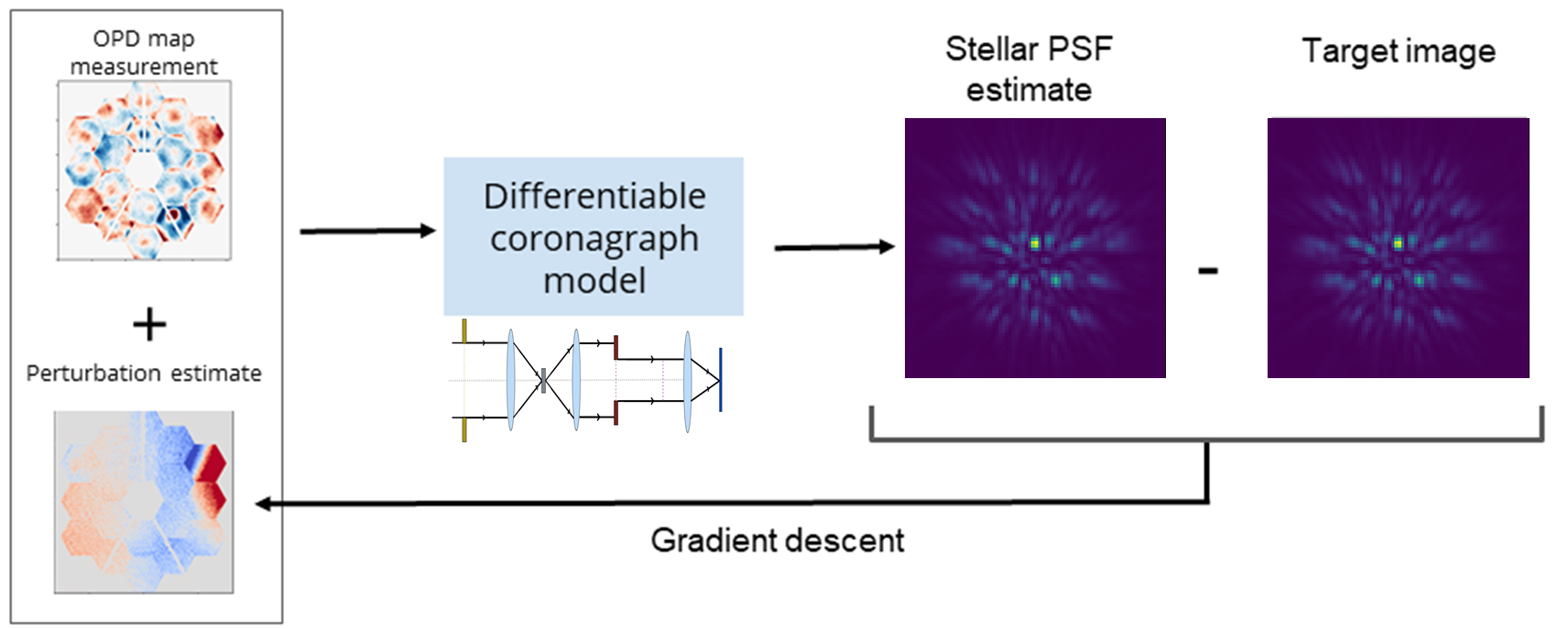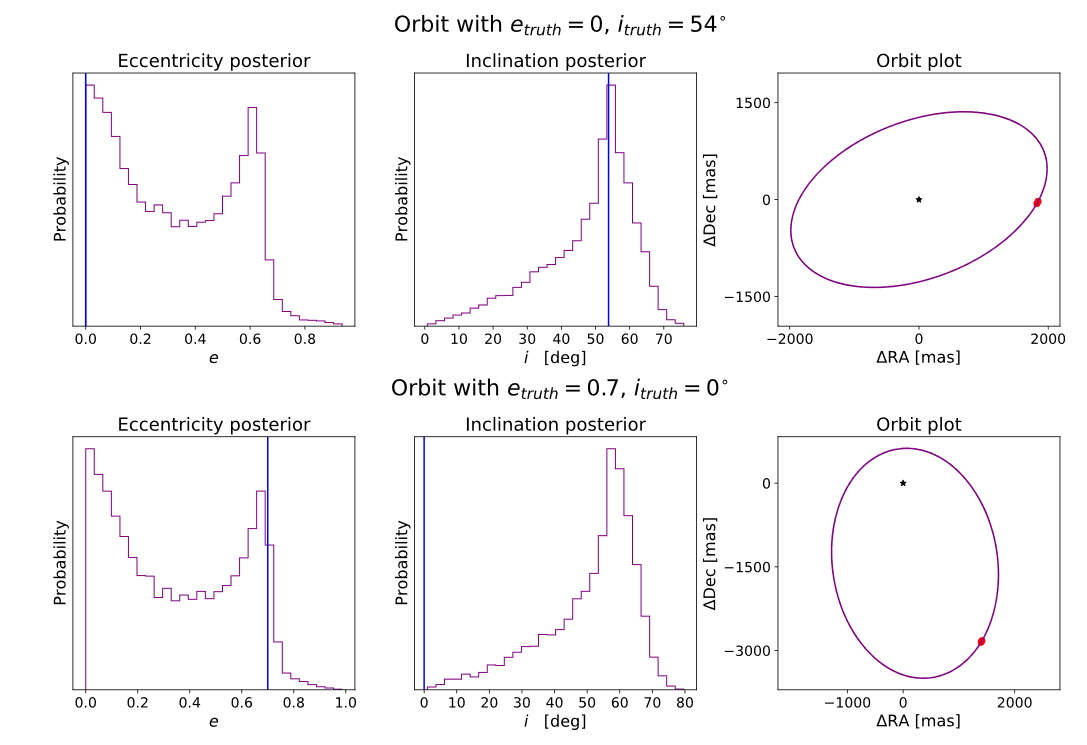Research
"A child of five could understand this! Someone bring here a child of five"
— Groucho Marx
My interests lie at the intersection of exoplanet science, instrumentation and computational imaging. Here are a few current and previous projects that I have worked on.
Differentiable coronagraph modeling for starlight subtraction

A major challenge in exoplanet imaging is to effectively remove starlight from our observations while keeping the light from the planet. Due to planets being orders-of-magnitude fainter than their host star, even small residuals of starlight can hide a planet. Current methods to remove starlight consist on taking reference images and using Principal Component Analysis (PCA) to model our star of interest, so that we can remove that starlight model from our images.
In collaboration with Brandon Y. Feng, Prof. Katie Bouman and Prof. Aviad Levis, we are developing a forward-modeling alternative approach for starlight subtraction. See here for our first proof-of-concept paper.
I am Principal Investigator for a Cycle 4 JWST program (AR 7942) aiming to further develop and apply this framework. We have several exciting results coming up soon, so stay tuned for our future papers!
Imaging sub-Jupiters for the first time with JWST/NIRCam
JWST is the only observatory for the foreseeable future that will be able to directly image wide-separation, sub-Jupiter mass exoplanets. Its extraordinary near-infrared and mid-infrared sensitivity make it ideal to discover and characterize the atmospheres of young, low mass giant planets.
I am a member of large international collaborations led by Dr. Aarynn Carter and Prof. Beth Biller, where I lead the systematic analysis of more than 100 JWST/NIRCam coronagraphic observations aiming to find the lowest mass planets directly imaged to date. The first in a series of papers with our results can be found here, where we look at the planet-disk system TWA 7.
Biases in orbit-fitting of directly-imaged exoplanets

Direct-imaging is most sensitive to planets very far from their star, where they are easier to detect. Given that the orbital period of a planet increases as its semi-major axis increases (by Kepler's third law), directly-imaged planets tend to have relatively long periods, some even up to hundreds or thousands of years. This means that even with years of observations, we often times can see the planet only moving through a small fraction of its orbit, making the inference of the orbit of the planet very challenging.
Given that reliably fitting the orbit of a planet can reveal vital information about its formation, history and environment, in collaboration with Jason Wang and Sarah Blunt I carried out a systematic statistical analysis of the biases we are most prone to when estimating orbits of directly-imaged planets. Performing our analyses with widely-used Bayesian frameworks and setups, we characterize biases such as the eccentricity-inclination degeneracy and the coverage of the credible intervals over orbital parameters. See here for our paper.